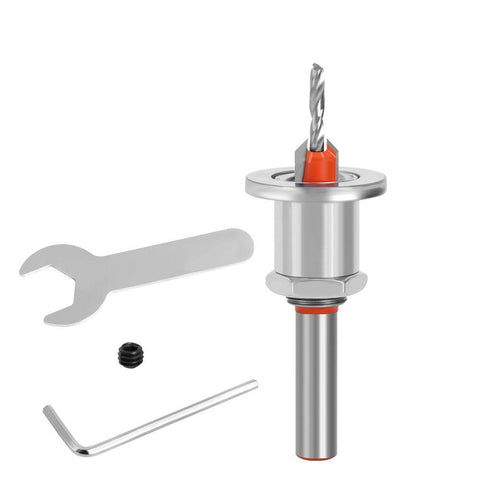Countersinks are versatile tools used in various industries and woodworking applications. These specialized woodworking tools are designed to create recessed conical holes, known as countersinks, in materials such as wood, metal, or plastic. In this essay, we will explore the purpose of countersinks, highlighting their importance in enhancing the functionality and appearance of screwed connections.
Flush Screw Installation: The primary purpose of countersinks is to allow for the flush installation of screws. By creating a conical recess at the opening of a drilled hole, countersinks provide a space for the screw head to sit flush with or slightly below the surface of the material. This flush installation eliminates any protrusions that would otherwise hinder the smoothness of the surface or cause interference with other components.
Preventing Splitting and Cracking: Countersinks play a crucial role in preventing splitting or cracking of materials, particularly in woodworking applications. When a screw is driven directly into a material without a countersink, the material can experience stress concentration around the screw head. This stress can lead to the material splitting or cracking, compromising its integrity. By using countersinks, the stress is distributed more evenly, reducing the likelihood of damage.
Increased Torque and Grip: Countersinks also contribute to improved torque and grip of screws. When it is created, the countersink screw head is seated deeper into the material, allowing for a more secure connection. This increased depth provides better engagement between the screw and the material, resulting in enhanced torque transfer and a tighter grip. It ensures that the screw remains firmly in place, even under significant load or vibration.
Aesthetic Considerations: In addition to their functional benefits, countersinks also enhance the overall appearance of screwed connections. When screws are installed without countersinks, the exposed screw heads can be visually unappealing, especially in woodworking projects or when working with visible surfaces. Countersinks create a clean, recessed area for the screw heads, allowing for a more aesthetically pleasing finish. This is particularly important when striving for a professional and polished look.
Compatibility with Counterbore and Plug Applications: Countersinks often work in conjunction with counterbores and plugs. Counterbores create a wider recess to accommodate both the screw head and a matching plug, while countersinks focus solely on recessing the screw head. This combination allows for the use of plugs that match the surrounding material, concealing the screw heads completely and further enhancing the appearance of the finished project.
Versatility: Countersinks are versatile tools that can be used with different materials and screw types. They are commonly used in woodworking, metalworking, and even in plastic fabrication. Countersinks are available in various shapes and sizes to accommodate different screw sizes and head types, offering flexibility and adaptability to specific project requirements.
In conclusion, the purpose of countersinks is multi-fold, encompassing both functional and aesthetic considerations. They allow for flush screw installation, prevent splitting and cracking of materials, improve torque and grip, and enhance the appearance of screwed connections. By utilizing countersinks, craftsmen can achieve stronger and more visually pleasing connections, whether in woodworking, metalworking, or plastic fabrication. The versatility and benefits offered by countersinks make them indispensable tools in achieving high-quality, durable, and aesthetically appealing results.

